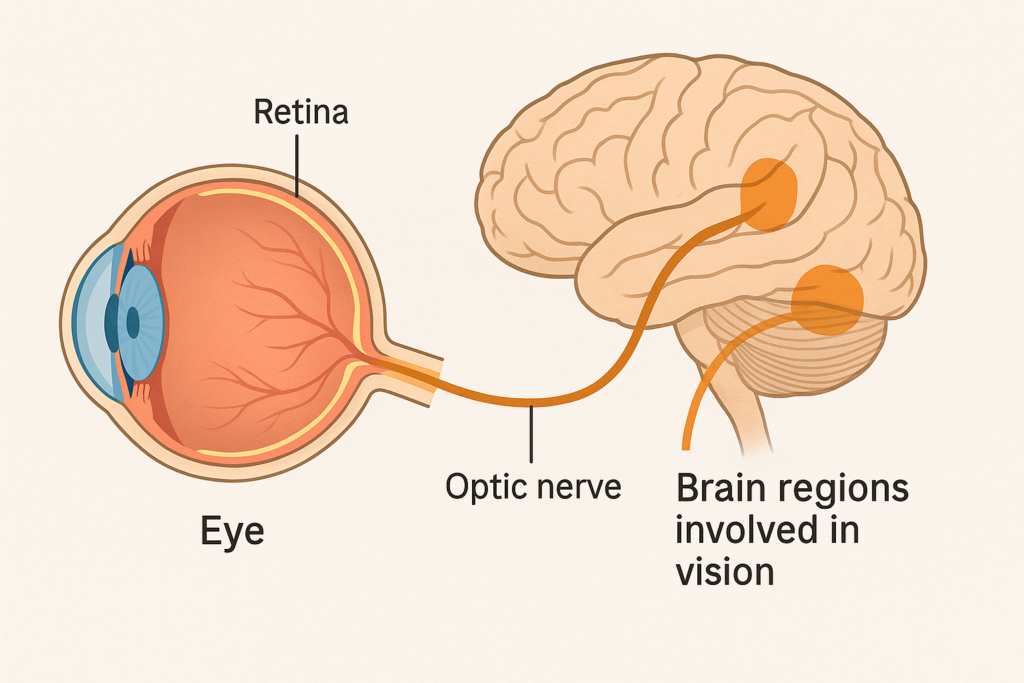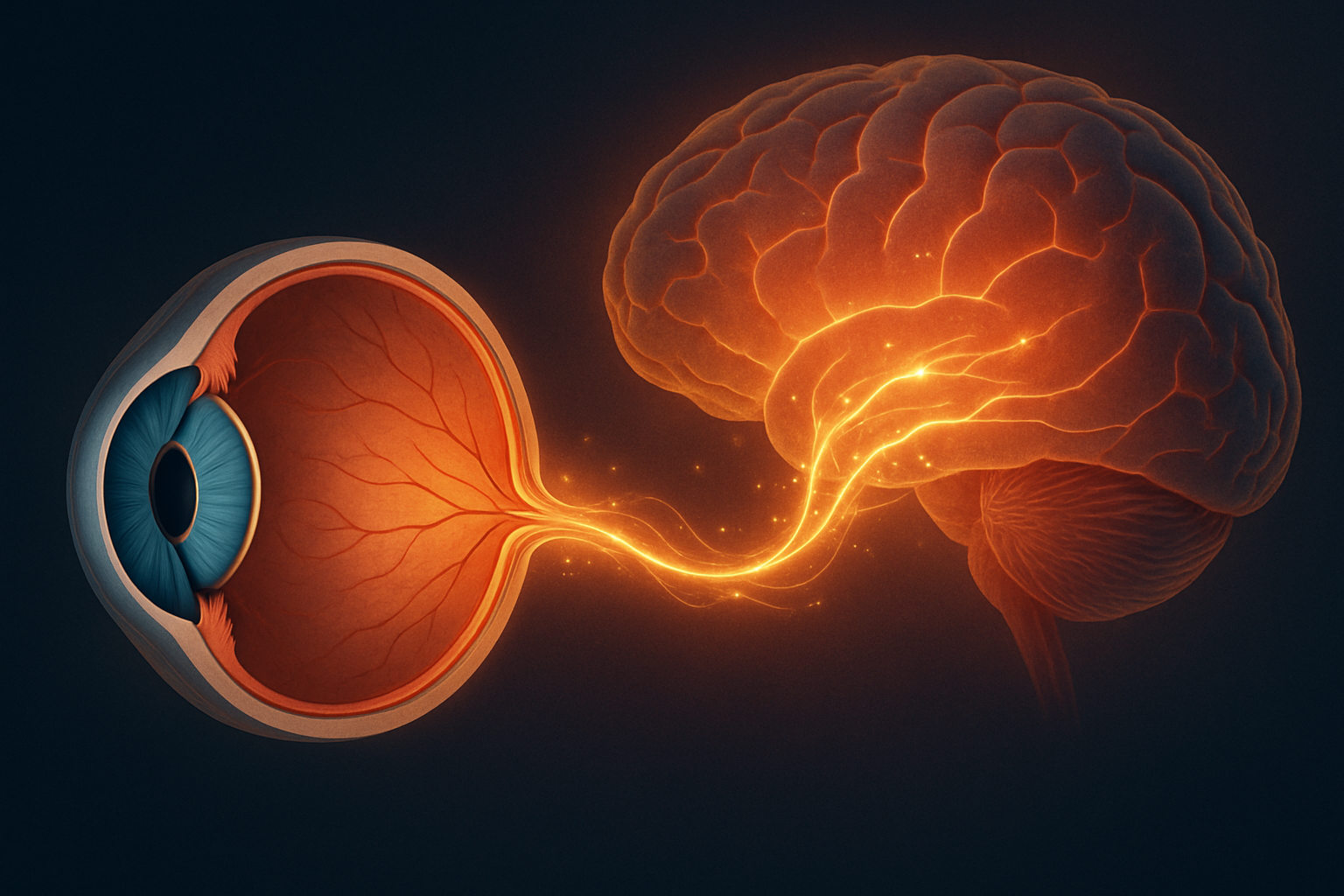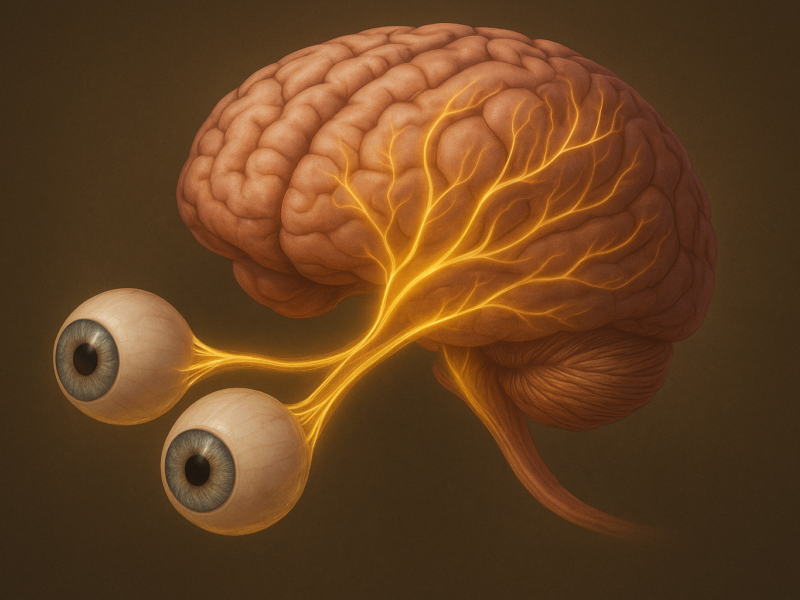Introduction
The saying “the eyes are the window to the soul” might be poetic, but in modern medicine, eyes are increasingly recognized as a window to the brain. Since the retina is an extension of the central nervous system, changes in eye health can reveal early signs of neurological disorders such as Alzheimer’s disease, Parkinson’s disease, and multiple sclerosis (MS).
In this article, we will explore the deep connection between eye health and brain health, how eye exams can serve as a non-invasive screening tool, and what you can do to protect both your vision and neurological wellness.
Section 1: How the Eye and Brain Are Connected
- Anatomical link: the retina is neural tissue directly connected to the brain through the optic nerve.
- Functional link: vision accounts for about 50% of brain activity.
- Eye changes as biomarkers: retinal thinning, vascular changes, and eye movement abnormalities.
Section 2: Eye Changes in Alzheimer’s Disease
- Early signs visible in the retina before cognitive symptoms.
- Retinal amyloid deposits mirror brain plaques.
- Optical coherence tomography (OCT) used in early detection.
- Visual symptoms: contrast sensitivity loss, trouble recognizing faces.
Section 3: Parkinson’s Disease and the Eyes
- Parkinson’s patients often show reduced blinking and dry eye.
- Eye movement issues (slowed saccades, difficulty focusing).
- Dopamine deficiency affects retina as well as brain.
- Eye exams could become a biomarker for Parkinson’s progression.

Section 4: Multiple Sclerosis (MS) and Visual Symptoms
- Optic neuritis as one of the first signs of MS.
- Demyelination visible in optic nerve fibers.
- Eye-tracking technology helping detect subtle MS progression.
- How early treatment prevents vision loss and slows brain disease.
Section 5: Other Neurological Conditions Linked to the Eyes
- Stroke → sudden vision loss, double vision.
- Migraines → aura and visual disturbances.
- Epilepsy → eye movement patterns before seizures.
Section 6: Prevention and Lifestyle Strategies
- Regular eye exams = early detection of neurological disorders.
- Nutrition: omega-3s, antioxidants, and neuroprotective foods.
- Stress management and sleep for both eye and brain health.
- Digital hygiene: reducing blue light exposure to protect neural pathways.
Did You Know?
- 90% of people with MS experience some form of vision issue during the disease.
- Alzheimer’s changes can be detected in the eyes up to 20 years before memory loss.
- Half of the brain is involved in processing visual information.
FAQ Section
1. Can an eye exam detect Alzheimer’s disease?
Yes, new imaging technologies like OCT and retinal scans can show early signs of Alzheimer’s before cognitive decline.
2. What eye symptoms are common in Parkinson’s disease?
Reduced blinking, dry eyes, blurred vision, and difficulty with eye movement coordination.
3. Is optic neuritis always linked to multiple sclerosis?
Not always, but about 50% of people with optic neuritis eventually develop MS.
4. How often should I get an eye exam for brain health?
Adults should have comprehensive eye exams every 1–2 years, and annually after age 40 or if risk factors exist.
Conclusion
The connection between eye health and brain health is undeniable. Eyes not only reflect how well we see but also provide a window into the neurological status of the brain. Conditions like Alzheimer’s, Parkinson’s, and MS can all manifest in the eyes long before more obvious symptoms appear.
By prioritizing regular eye exams, healthy lifestyle choices, and awareness of eye–brain links, you are taking proactive steps to protect both your vision and cognitive health.


